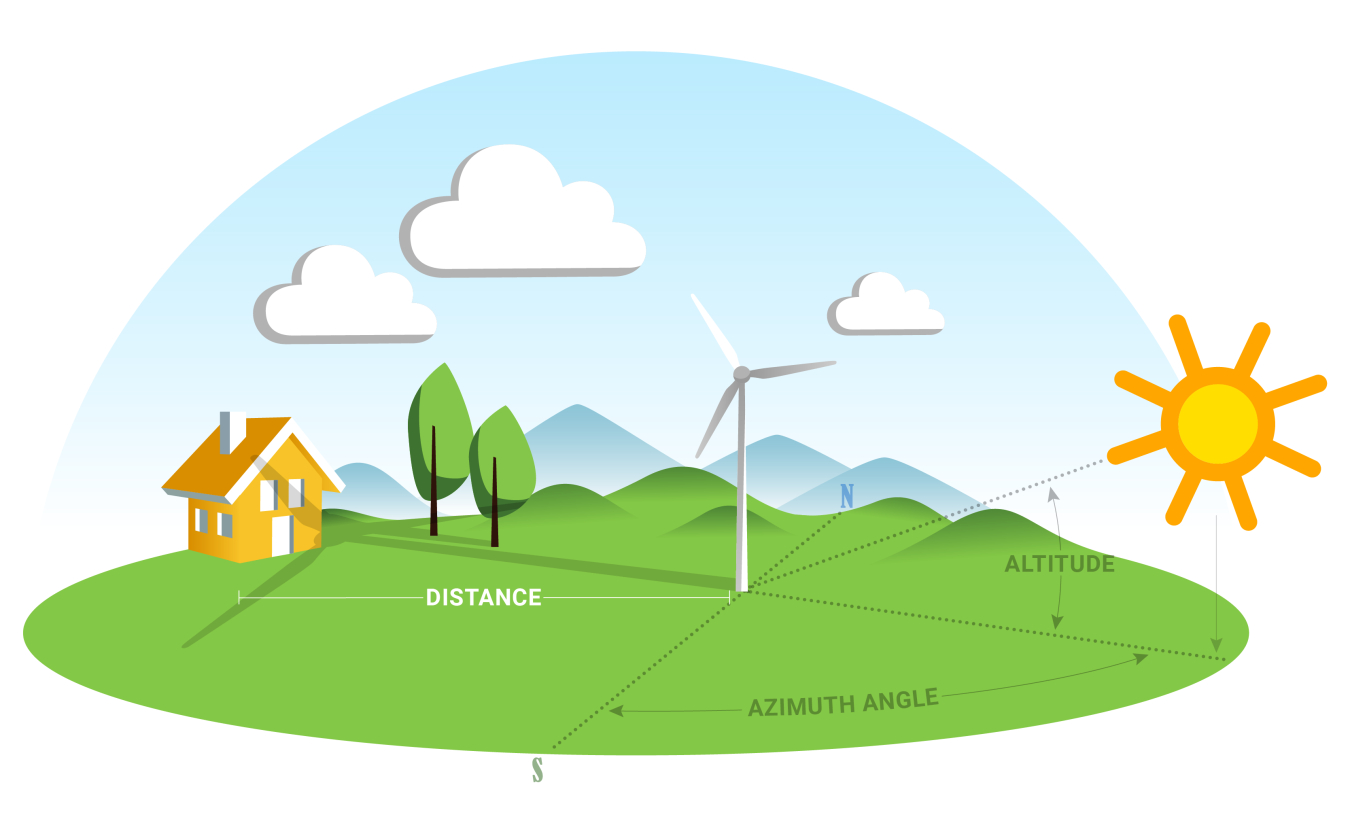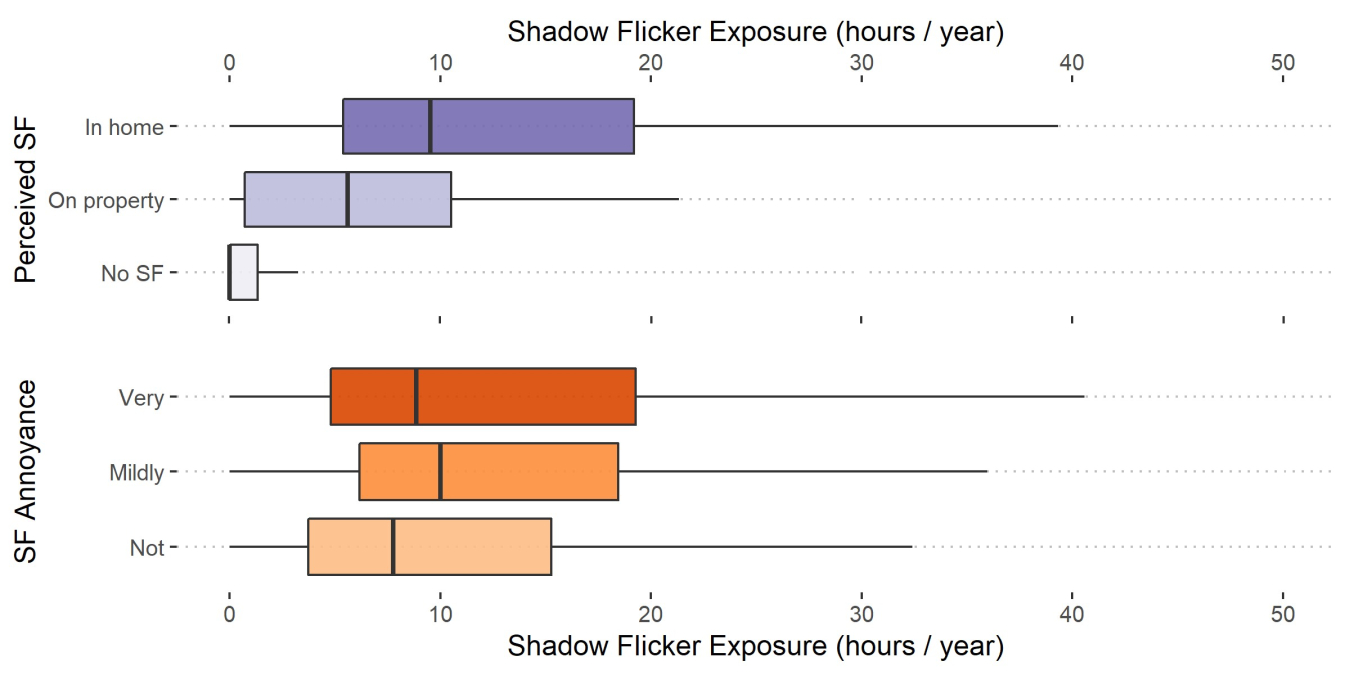New study reveals mixed reactions to flickering shadows generated by wind turbines
The moving shadows caused by wind turbines, referred to as “shadow flicker,” are known to annoy some people. However, the relationship between the amount of shadow flicker exposure and the annoyance it causes is poorly understood.
A new Lawrence Berkeley National Laboratory-led study published in Energy Research and Social Science examines the extent of shadow flicker exposure (measured in hours per year) around U.S. wind projects and identifies the key factors predicting shadow flicker perception (awareness) and annoyance.
Researchers found that people are more likely to notice shadow flicker if they are exposed to it for longer and more numerous periods of time and less likely to notice shadow flicker when exposure is low. Researchers found no clear relationship between the amount of shadow flicker exposure and self-reported annoyance to shadow flicker.
Researchers from Berkeley Lab, Resource Systems Group (RSG), and Vermont Environmental Research Associates modeled shadow flicker at more than 35,000 residences located within 2 kilometers of wind turbines at 61 wind projects across 17 states. Berkeley Lab collected in-depth shadow flicker perception and annoyance data from nearly 750 of these residences as part of a national survey of wind project neighbors.
“Our research found that the perception of shadow flicker is primarily a response to the quantity of exposure,” said Ben Hoen, a research scientist at Berkeley Lab and one of the paper’s authors. “Perceived shadow flicker is also influenced by other observable characteristics such as the distance to the nearest turbine and whether a respondent moved in after the project was built.”
Yet, the relationship between shadow flicker exposure and shadow flicker annoyance is much weaker. Study results indicate that shadow flicker annoyance is primarily a subjective response to other factors, such as wind turbine aesthetics and general annoyance to nearby sounds, like those from lawnmowers and traffic.

Shadow flicker annoyance: Is it caused by frequency of exposure to it or other factors? Research led by Berkeley Lab identifies the key factors predicting shadow flicker awareness and annoyance.
The researchers also found that local wind energy siting ordinances typically do not enforce shadow flicker exposure limits at all or do so ambiguously. Of the 50 U.S. counties represented in the study, most (62%) do not have any limit on shadow flicker exposure. Of those that do have a limit, 30 hours per year is by far the most common; however, it’s unclear how shadow flicker is modeled. This is important because shadow flicker can be modeled in two ways that produce different results:
- “Worst case” – Assumes turbines are always operating, and no clouds are present to block the shadow flicker
- “Real case” – Assumes typical cloud cover and turbine operating characteristics, which is a typical European limit.
In comparing both modeling methods, the researchers found that “worst case” modeling yields roughly 3 hours of shadow flicker for every 1 hour under “real-case” assumptions.
“Developers and local elected officials seeking to mitigate shadow flicker annoyance should not focus on modeled exposure alone,” said Ryan Haac of RSG. “A more transparent and inclusive planning process that allows local community members to have some influence over wind project aesthetics, for example, might be more productive.”

Figure 1. This figure indicates the key finding of the study: that shadow flicker exposure is not a predictor of annoyance but is a predictor of perception.
Spring 2022 R&D Newsletter
Explore previous editions of the Wind R&D Newsletter or browse articles by topic:
Subscribe to the WETO e-newsletter to stay informed on the latest wind energy news, events, publications, and updates.
